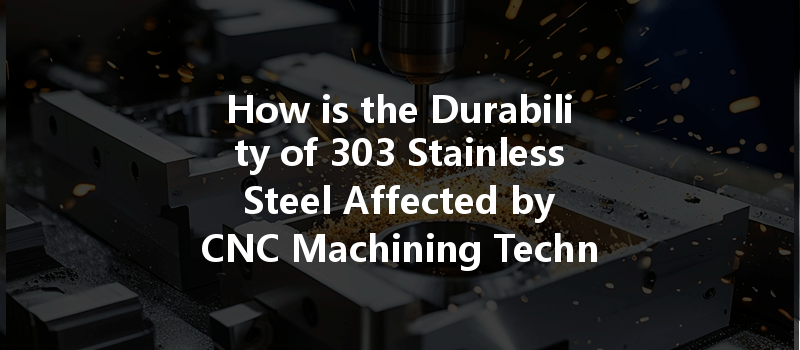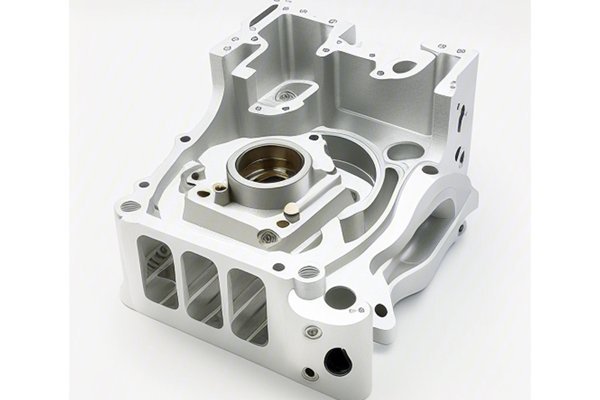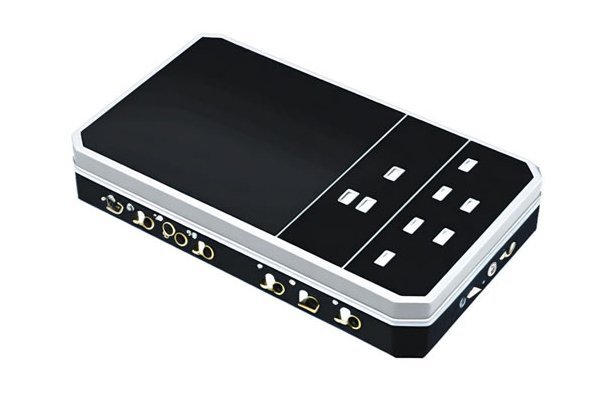Did you know that stainless steel is one of the most popular materials used in manufacturing due to its incredible resistance to corrosion and oxidation? Among its various grades, 303 stainless steel stands out not only for its exceptional mechanical properties but also for its ease of machining—a combination that has made it a favorite in industries ranging from aerospace to medical devices. However, the question remains: how does the CNC machining process affect the durability of this prized material? This blog delves deep into the intricate relationship between 303 stainless steel’s performance and the CNC machining techniques employed, aiming to provide a comprehensive understanding of how to maximize durability while optimizing production efficiency.
to 303 Stainless Steel
What is 303 Stainless Steel?
303 stainless steel is an austenitic grade of stainless steel, renowned for being non-magnetic and having excellent corrosion resistance. Its composition primarily includes iron, with addition of chromium (approximately 18%) and nickel (around 8%). The key differentiator that sets 303 apart from other stainless steels, like 304, is the addition of sulfur and phosphorus, which enhance its machinability. As a result, 303 can be machined into intricate designs with relative ease.
Importance of Durability
Durability in materials such as stainless steel is crucial for ensuring longevity and reliability in real-world applications. In industries like aerospace, automotive, and construction, components often undergo various stresses, including tensile, compressive, and shear forces, which can lead to wear, tear, and eventual failure if not appropriately manufactured. Understanding how the CNC machining process interacts with 303 stainless steel helps engineers and manufacturers develop components that not only meet design specifications but are also durable and reliable.
Understanding CNC Machining
What is CNC Machining?
Computer Numerical Control (CNC) machining is a manufacturing process in which pre-programmed computer software dictates the movement of factory tools and machinery. This technology is used to control a range of complex machinery, such as grinders, lathes, and mills. The precision and consistency of CNC machines make them ideal for working with materials like 303 stainless steel, yielding parts that can meet exacting specifications.
The CNC Machining Process
Benefits of CNC Machining
The Impact of CNC Machining Techniques on the Durability of 303 Stainless Steel
The durability of 303 stainless steel, like any other material, is influenced by the machining process it undergoes. Here, we delve into specific machining techniques and their implications for material durability.
Cutting Speed and Feed Rate
Importance of Speed and Feed
The cutting speed and feed rate are two critical parameters that influence both the surface finish and the durability of machined components. Cutting speed refers to the speed at which the tool engages the material, while the feed rate is the rate at which the workpiece is fed into the cutting tool.
Effects on Durability
Best Practices: To optimize durability, find a balance by using moderate cutting speeds and feed rates suited specifically for 303 stainless steel.
Tool Selection: Material and Geometry
Importance of Tooling
Selecting the appropriate cutting tools is crucial in the CNC machining process. Tools can vary based on material (carbide, high-speed steel, etc.), geometry (geometry of cutting edges), and coating (uncoated, TiN, TiAlN, etc.).
Effects on Durability
Best Practices: Employ carbide tools with appropriate coatings to minimize wear and ensure extended operation under high heat conditions.
Coolants and Lubricants
Purpose of Coolants
Coolants and lubricants are essential in CNC machining, particularly when working with metals like 303 stainless steel. They serve multiple purposes, including reducing friction, dissipating heat, and flushing away chips from the cutting area.
Effects on Durability
Best Practices: Use water-soluble coolants designed specifically for stainless steel, with careful attention to their concentrations and application methods.

Surface Finish and Its Impact
Impact of Surface Finish
The surface finish of a component affects its overall performance, particularly in corrosion resistance. A rough surface might have micro-cracks and crevices that can gather contaminants, while a smoother finish allows for better protection against environmental factors.
Effects on Durability
Best Practices: Aim for a surface roughness of Ra 0.8 or lower to achieve optimal performance.
Heat Treatment Options
Importance of Heat Treatment
Heat treatment, which involves heating and cooling 303 stainless steel under controlled conditions, can significantly alter its mechanical properties, including hardness and tensile strength.
Effects on Durability
Best Practices: Engage qualified metallurgists to determine the appropriate heat treatment schedule based on the intended application.
Challenges and Solutions in CNC Machining of 303 Stainless Steel
While CNC machining of 303 stainless steel brings numerous benefits, it also presents several challenges that can adversely affect durability. Below, we detail common issues alongside potential solutions.
Issue 1: Tool Wear
Challenge Description
Tool wear is a common hurdle in CNC machining due to continuous friction and heat generation. Excessive wear can lead to dimensional inaccuracy and compromised component strength.
Solutions
Issue 2: Thermal Distortion
Challenge Description
Thermal distortion occurs when areas of the material are overheated during machining, causing warping or deformation.
Solutions
Issue 3: Improper Setup
Challenge Description
An incorrect setup can lead to vibrations, excessive tool wear, and poor surface finishes—ultimately affecting durability.
Solutions
In conclusion, enhancing the durability of CNC-machined 303 stainless steel components is nuanced and multifaceted. By carefully considering cutting parameters, tool selection, coolant usage, surface finish, and applicable heat treatments, manufacturers can achieve optimized performance and longevity in their machined parts.
The implications of these processes extend beyond the individual component; they resonate through the entire manufacturing cycle and affect the end-user experience. A durable 303 stainless steel part is not merely the result of machining; it reflects keen insights into design, engineering, and manufacturing practices.
As industries continue to advance, the importance of maintaining rigorous standards in stainless steel machining cannot be overstated. Understanding these nuances ensures that we produce reliable, long-lasting products that meet the dynamic demands of modern applications.
Why This Matters
This blog serves as a crucial resource for manufacturers, engineers, and CNC machining operators looking to optimize the durability of 303 stainless steel parts. In a world where manufacturing precision and part longevity are increasingly important, taking the time to further understand these processes translates into tangible benefits—higher performance, reduced waste, and most importantly, satisfied customers. Remember, quality machining is not just about cutting material; it’s about creating dependable solutions that withstand the test of time.






